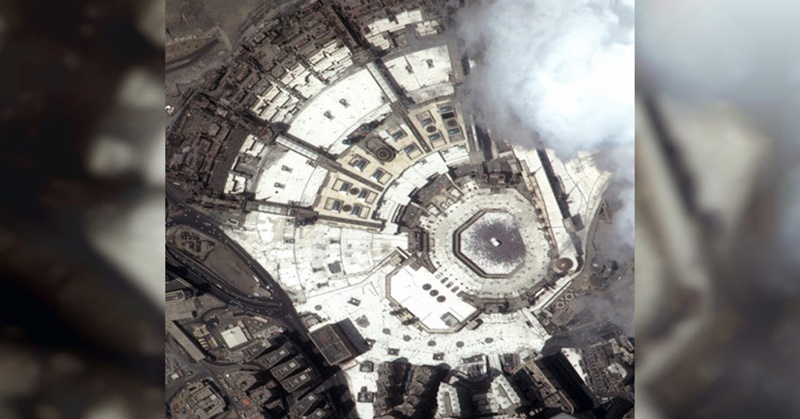In time for the Eid season, an image of the Grand Mosque of Makkah was taken by KhalifaSat on the first day of Eid Al Adha during the Hajj pilgrimage of this year.
The KhalifaSat, which was launched into space in October last year provides images with specifications that meet the highest international standards in space images, which are used to help organizations in government and private sectors get accurate data allowing them to monitor environmental changes, detect the effects of global warming, ensure responsible urban planning and management, and aid relief efforts at times of natural disasters.

[LOOK] Grand Mosque of Makkah as Seen from Space During Eid Al Adha
The KhalifaSat was fully developed at the Mohammed Bin Rashid Space Centre’s facilities by Emirati engineers and has five patents and seven space innovations making it the most advanced satellite of its category in the world, as shared in a report by WAM.
This year, there were nearly 2.5 million pilgrims who performed Tawaf at the Grand Mosque, a seven-round circumambulation around Kaaba at the end of their Hajj pilgrimage in the holy city of Makkah.
Walking along a path traversed by the Prophet Mohammed some 1,400 years ago, the hajj in Islam is meant to be a great equalizer and unifier, with pilgrims shedding overt displays of wealth and materialism.
During this period, all male pilgrims wear simple terry cloth white garments and women don conservative dress and headscarves, forgoing makeup, nail polish and perfume in an effort to draw closer to God and engage in intense worship for the five-day Hajj.
Nearly 2 million pilgrims stood shoulder to shoulder for an emotional day of repentance and supplication at Mount Arafat for the peak of the annual Hajj.
Mount Arafat is symbolic to the pilgrims because this is the site where the Prophet Mohammed (PBUH) delivered his final sermon, calling for equality and unity.
Last Friday (August 9), thousands of pilgrims circled the cube-shaped Kaaba in Makkah, Islam’s holiest site, where they circled the Kaaba counter-clockwise, their hearts tilting toward the structure that’s meant to symbolize the monotheistic principle of the oneness of God in Islam.
In a similar fashion, Muslims around the world pray toward the Kaaba daily, using compasses to help them pray in its direction.
The unity demonstrated by Muslims during this time, as captured in photos by the KhalifaSat from space confirms how big of an impact Islam has made in the lives of its religious faithful.
ALSO READ: UAE President Authorizes Release of 669 Prisoners for Eid